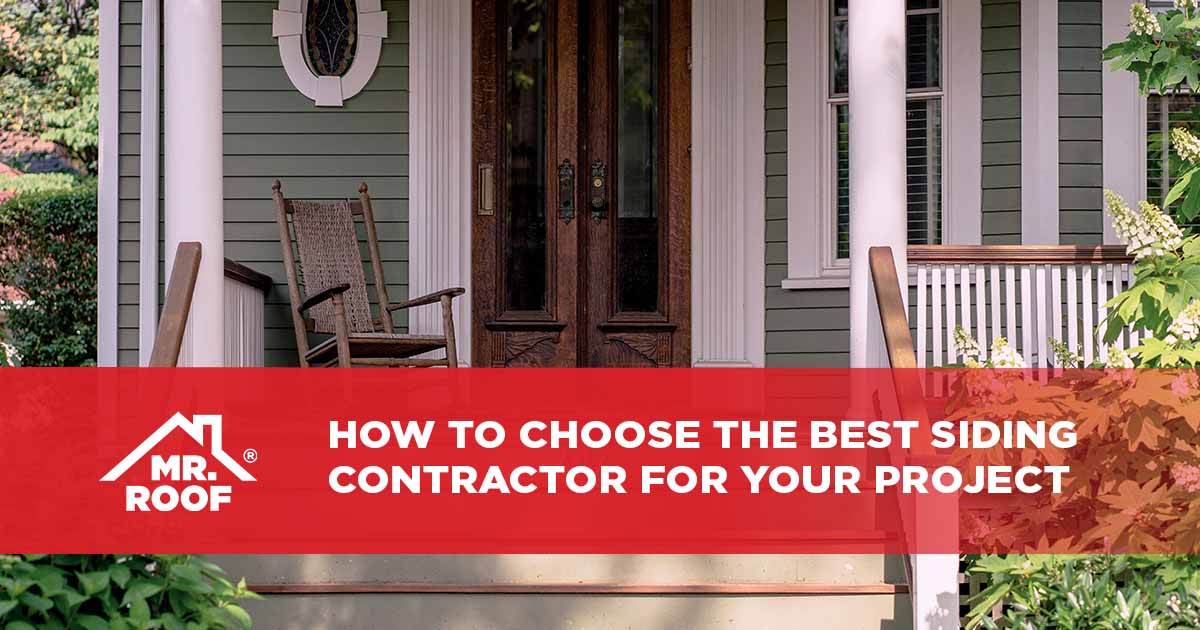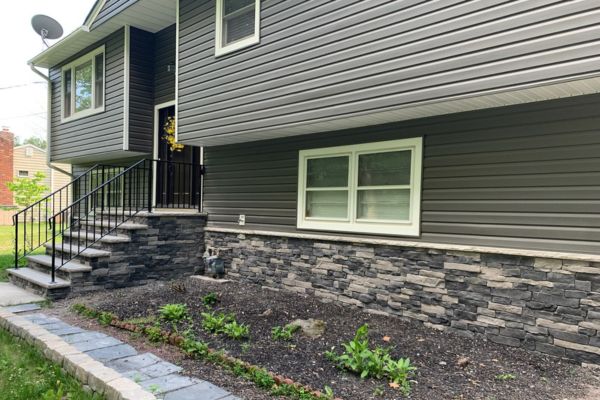The Important Guide to the Numerous Kinds Of Exterior Siding and Their Unique Advantages
In the realm of home improvement, selecting the right house siding is a vital decision that influences both visual appeal and functional performance. With so many options to think about, which exterior siding product absolutely stands out for your particular job?
Timber Home Siding
Timber siding, a popular option for household exteriors, offers an ageless aesthetic that incorporates natural elegance with structural stability. This house siding material is available in numerous designs, including clapboard, shingles, and board-and-batten, allowing homeowners to personalize their appearance to match their style preferences. Timber house siding is typically crafted from sturdy species such as cedar, redwood, or want, which are understood for their strength and capability to stand up to environmental stressors.
Among the primary benefits of timber exterior siding is its superb insulation buildings, which can add to power effectiveness and lower home heating expenses. Furthermore, wood siding is biodegradable, making it an eco friendly option when sourced sustainably. Normal upkeep, consisting of paint or discoloration, can lengthen its life expectancy and boost its look, permitting home owners to maintain the all-natural appeal of the timber.
However, prospective disadvantages consist of sensitivity to bugs, rot, and weather condition damage, necessitating sufficient treatment and upkeep - morris siding contractor. Regardless of these worries, when effectively looked after, wood house siding can supply a sturdy and beautiful option that boosts the character of a home while using a cozy, inviting ambience

Vinyl House Siding
Vinyl home siding has actually become a leading option for house owners seeking a low-maintenance outside choice that incorporates sturdiness and affordability. This versatile product is crafted from polyvinyl chloride (PVC), making it immune to different climate condition, consisting of dampness and UV rays. As an outcome, plastic house siding does not warp, rot, or discolor, making sure resilient visual charm.
Among the primary advantages of vinyl exterior siding is its comprehensive range of designs and shades, enabling property owners to achieve the desired search for their property without the requirement for constant repainting. Additionally, plastic house siding is simple to set up, which can considerably reduce labor expenses throughout construction or restoration projects.
Vinyl siding additionally adds to power effectiveness. Several alternatives function insulation support, which enhances thermal efficiency, assisting to preserve comfy interior temperature levels and possibly lowering power expenses. Its smooth surface promotes very easy cleansing, requiring only periodic cleaning with a yard tube to get rid of dirt and particles.
Fiber Concrete Siding
Fiber concrete home siding has obtained grip among contractors and property owners alike because of its amazing mix of durability and visual flexibility. Composed of a mix of cellulose, sand, and cement fibers, this house siding option is engineered to hold up against severe weather, including high winds, hefty rainfall, and temperature changes, making it a long-lasting selection for domestic outsides.

Among the primary benefits of fiber concrete house siding is its resistance to bugs, such moved here as termites, and its non-combustible nature, offering improved fire safety. morris siding contractor. Furthermore, it is readily available in a broad variety of appearances, shades, and styles, enabling house owners to achieve their desired aesthetic without sacrificing performance
Another benefit is its reduced maintenance needs; fiber cement siding usually requires paint or staining every 5-10 years, which is much less frequent than various other great site products. Its long life adds to a lower overall cost of ownership, as it reduces the need for regular fixings or replacements.
Eventually, fiber cement home siding stands for an exceptional financial investment for those seeking a durable, appealing, and versatile exterior choice, combining both form and feature to enhance the home's visual charm.
Steel House Siding
The allure of metal home siding lies in its durable longevity and contemporary aesthetic allure, making it a preferred selection for contemporary architecture. Readily available in products such as light weight aluminum and steel, metal home siding supplies a variety of coatings and shades, permitting homeowners to accomplish a personalized appearance that matches their style vision.

Energy performance is one more considerable benefit, as numerous metal house siding products are developed with insulation choices that aid manage interior temperatures. This can lead to reduced power costs in time. Furthermore, steel exterior siding is often recyclable, making it an eco pleasant selection for sustainability-minded home owners.
The installation procedure for steel house siding can be fairly simple, causing a quicker turn-around time for construction projects. Overall, steel house siding incorporates capability and design, making it a practical choice for those seeking a long-lasting and visually attractive exterior coating.
Block and Stone Home Siding
Brick and rock siding stands out as a timeless selection that enhances the visual appeal of any home. Understood for their toughness and reduced upkeep, these products offer an extraordinary roi while elevating the residential or commercial property's aesthetic charm. Readily available in various shades, appearances, and patterns, brick and rock can be customized to match varied building designs, from standard to modern-day.
Among the primary benefits of brick and rock home siding is their energy effectiveness. Both products Visit Website possess natural insulating properties that aid control indoor temperatures, potentially decreasing heating & cooling prices. In addition, they offer superior fire resistance compared to various other house siding choices, adding to boosted safety and security.
Another benefit is their longevity. Brick and rock can last for years, usually requiring marginal upkeep past occasional cleaning. Unlike wood house siding, they are unsusceptible bugs and rot, making sure a durable outside that holds up against the components.
Conclusion
In recap, the selection of siding dramatically impacts a home's visual allure, power effectiveness, and maintenance needs. Each kind of siding-- whether wood, plastic, fiber concrete, brick, or steel and rock-- uses unique advantages tailored to various property owner choices and environmental problems.
One of the primary benefits of timber home siding is its outstanding insulation residential or commercial properties, which can contribute to power performance and reduced heating costs. Furthermore, wood exterior siding is naturally degradable, making it an ecologically friendly choice when sourced sustainably.One of the main benefits of metal siding is its resistance to different ecological variables.Energy efficiency is an additional substantial advantage, as several metal house siding items are created with insulation alternatives that help regulate indoor temperatures. Each kind of siding-- whether wood, vinyl, fiber steel, concrete, or block and stone-- uses unique benefits tailored to numerous homeowner preferences and environmental problems.